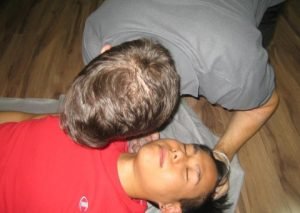CARDIAC ARREST
Sudden cardiac arrest (SCA) is when the heart stops beating abruptly. When the heart stops beating, no blood and oxygen is delivered to the rest of the body.

EARTHQUAKES
Earthquakes can occur at any time of the day, any day of the year. There are more than a thousand earthquakes each year.

The Role of Rescuers in the Seattle CPR Chain
Seattle is one of the cities that strongly advocates CPR in order to lower the death rates of cardiovascular diseases in the area. This is clearly reflected in their Seattle CPR chain, which is a systematized reaction plan which involves rescuers such as EMT’s, healthcare professionals in hospitals and other facilities, the government and several non-profit organizations. Through this Seattle CPR chain, healthcare professionals and researchers began noticing an increase in the survival rate of patients who suffered from a heart attack or stroke.
The Ratio of Rescuers to Patients
According to the recent count of paramedics and rescuers who are involved in this CPR chain, there are approximately 4, 000 EMT’s who are trained to respond in the quickest time possible once an emergency call is placed. The program also involves 260 paramedics who are more medically-trained than EMT’s and are equipped to provide other supplementary medical interventions to ensure the stability of the patient. Even though this number might seem a lot, it is still relatively small considering that the city’s population is almost 2 million. This means that a paramedic or EMT might be asked to respond in more than 20 cases of cardiac arrest or emergency in a day.
The System Used in the Seattle CPR Chain
Despite the lack of EMT’s and paramedics, the chain was still able to increase the survivability of patients who have suffered from stroke or heart conditions ever since its implementation. This is because the chain’s system provides easy assessment of patients which in turn accommodates immediate implementation of CPR and other life-saving techniques. Once EMT’s arrive in the area, they are trained to ask only two questions. Based on the answer to these questions, they proceed with CPR and other life-saving techniques that are necessary. The paramedics are then trained to perform other medical interventions such as intravenous therapy while the EMT’s are conducting chest compressions or CPR. While the patient is being transported to a hospital, the EMT’s and paramedics complete patient notes in order to assist doctors and other healthcare professionals once the patient arrives at the facility.
The Role of Bystanders in the Seattle CPR Chain
One of the main problems that the chain faces is the fact that oftentimes, there are not enough EMT’s and that the public’s lack of knowledge when it comes to CPR makes it difficult for dispatchers to explain CPR procedures over the phone. The public can help solve this problem by having the initiative to take Seattle CPR classes to assist medical professionals in the implementation of the CPR chain.

